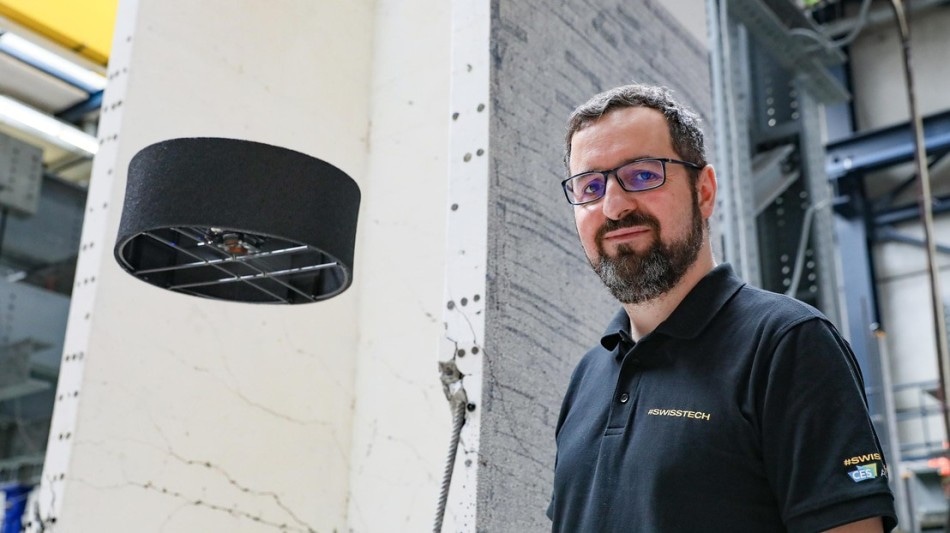Jul 18 2019
Flybotix, an EPFL startup, has created a new drone with just two propellers and a sophisticated stabilization system that enable it to fly two times longer than traditional models.
 (Image credit: EPFL)
(Image credit: EPFL)
In addition to its small size, this fact makes it ideal for examining hard-to-reach parts of industrial facilities like ducts.
The major limitation of small drones is their restricted flight time, which is a result of their heavy batteries and comparatively inefficient propellers. Therefore, for longer missions, a small drone’s battery has to be frequently replaced or recharged.
Although engineers are working on new designs to deal with this issue, they have not yet found any real solution. With more than 20 years of expertise in creating drone technology at EPFL and ETH Zurich, Samir Bouabdallah has developed an inventive propulsion system modeled after those employed by helicopters.
His design, advertised through his startup Flybotix, employs only two propellers and an algorithm-based stabilization mechanism, offering his drones “the aerodynamic performance of a helicopter and the mechanical stability of a quadcopter.” Recently Bouabdallah has decided to find possibilities in this potential market in China for the Venture Leaders China program and the CES Asia conference.
Two rotors guided by stabilization algorithms
The flying time of a drone is proportional to its size—if the machine is small, it can only spend less time in the air.
Drones with four rotors are highly stable, making them reliable and easy to use.
Samir Bouabdallah, EPFL
However, as these drones become smaller, their propellers become ever more inefficient. That, together with their restricted battery capacity, justifies their shortened flying times.
Using an entirely different type of propulsion system is one method to increase those times. For instance, by decreasing the number of propellers from four to two, engineers can make each propeller longer and the rotor more efficient.
In addition, that reduces the amount of power needed, which means that the same-sized battery can work for an extended period. However, so far, drones with two propellers were normally less stable and harder to control.
Bouabdallah’s design uses a ring-like structure—approximately 30 cm in diameter—in which the propellers are placed on top of each other in the center and spin in opposite directions. His drones resemble more like flying saucers when compared to the machines that are normally seen.
Another novelty corresponds to his drones’ stabilization mechanism. Helicopters employ a complex transmission system that allows pilots to manipulate the blades and maintain the aircraft’s pitch. However, this system is heavy, burdensome, and needs a substantial amount of maintenance.
However, Bouabdallah has created an algorithm that counteracts the two rotating forces and offers the same function as a helicopter’s transmission system. His drones can thus be piloted just as effortlessly as quadcopters, using a traditional remote-control device.
Bouabdallah’s drone, with its exceptional transmission system and foam covering its outer ring, can jump off of barriers without breaking. Scrutinizing dangerous or inaccessible regions is the first application that Flybotix will target.
In China last month, the group received considerable positive feedback on their technology and made some promising contacts. They anticipate to shortly introducing their drones on the Chinese market.
New dual-propeller drone can fly twice as long
(Video credit: EPFL)